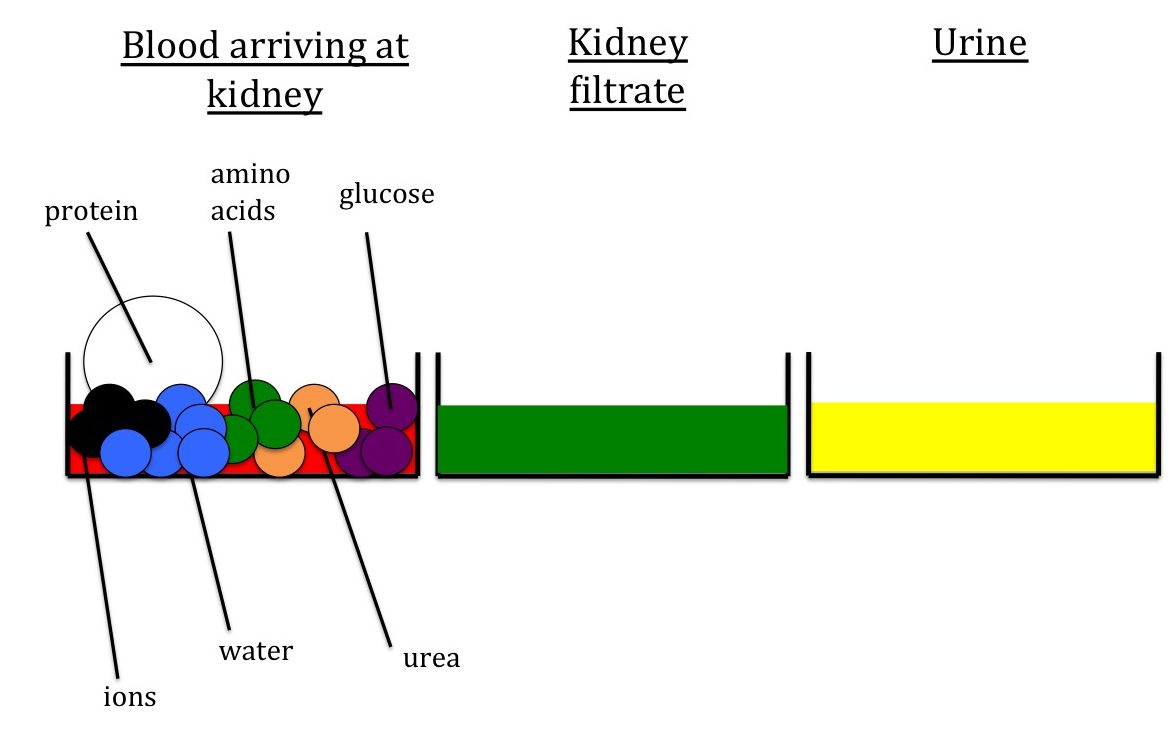Kidneys and osmoregulation teaching resources
Worksheets and lesson ideas to challenge students aged 11 to 16 to think hard about kidneys and osmoregulation (GCSE and Key Stage 3)
Overview: water is lost through sweating, breathing and urine. Kidneys play an important role in regulating the amount of water in the blood and also by excreting urea formed from the breakdown of excess amino acids in the liver. Blood arrives at the kidney under high pressure from the renal artery and is filtered. After filtration has taken place the kidney must then return all glucose, some water and some ions through selective reabsorption. The hormone ADH (anti-diuretic hormone) is released from the pituitary gland in response to low blood water levels and causes more water to be reabsorbed back into the blood from the kidney tubules. Alcohol and caffeine both inhibit ADH production. All blood passes through your kidneys about once every five minutes!
Big idea: organisms are organised on a cellular basis and have a finite life span
Key concept: the kidney filters blood to remove urea and excess water. After filtration the kidney selectively reabsorbs all glucose, some water and ions that are needed by the body. The reabsorption of water is controlled by the hormone ADH.
Linked knowledge: osmosis, diffusion, active transport, homeostasis, circulatory system
Misconception [scientific idea]: there is one large nephron in the kidney [there are approximately one million small nephrons in each kidney]; urine and faeces are analogous [faeces is waste that has not been absorbed into the blood, urine is produced by material that has been absorbed into the blood but then excrete].
Teaching resources
Where to start?
Start by getting students to identify the location of their kidneys. They are a pair of bean-shaped organs on either side of your spine, below your ribs and behind your belly. Take a kidney and show students the three main areas: cortex, medulla and pelvis.
Transport teaching resources
To understand kidney function, students will need to be confident with osmosis, active transport and diffusion.
 Modelling what happens to substances at the kidney
Modelling what happens to substances at the kidney
GCSE activity modelling what happens to substances at the kidney. This activity uses a model to help students understand the function of the kidney. Use this activity after students have been introduced to the concepts of ultrafiltration and selective reabsorption. The model provides an opportunity to really explore and advance understanding. This activity was contributed by Nicola Griffiths (@MrsNicolaG ). (PDF)
The journey of a water molecule through the body
Activity to describe the journey of a water molecule from the mouth to the urinal. They must sketch, label and annotate each major organ involved. Print off slide 2 in A3 and get students to work in pairs or individually. This activity should only be done when students have been introduced to the human kidney, circulatory system and digestion. While students are completing the diagram you can walk around the class and provide feedback. Provide students with key terms that are appropriate to use e.g. large intestine, urethra, artery, oesophagus, filter, kidney tubules, renal artery, bladder and ureter. (PDF)
Thinking deeper
- What problems does low blood pressure present to the kidney?
- Explain why people lost in the desert can only drink their urine 1-3 times before it is toxic?
- What kidney and hormonal adaptations would you expect to find in a desert rat? Explain your answer.
- Alcohol and caffeine inhibit the production of ADH. What effect would this have on a human?
